All-In [30067]
TigerPulse: 100%
Posts: 8907
Joined: 10/31/10
|
Military Pron - The Peacemaker (long)
Jul 26, 2021, 4:28 AM
|
|
By request, the history of “The Peacemaker”
……….
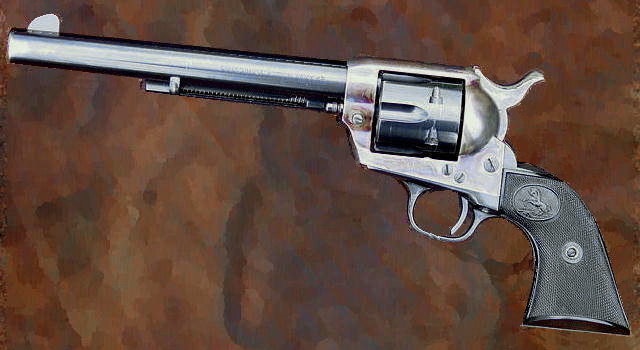
No, not the 1873 kind
Or this kind...

……….
Or even this kind...

This kind. The B-36.
……….
/b-36-peacemaker-large-57c4bbe83df78cc16edb7001.jpg)
……….
About the time we were dropping the atomic bombs on Japan, the next generation of US bombers was already in development and construction. The B-36 concept went back to 1941. It was a rush job because we thought England might fall and we’d need it pronto. But when England survived we put in on the back burner and its first flight wasn’t until 1946, a year and 2 days after Hiroshima.
……….

……….
It stayed with the long-range concept of “us against the world”, assuming we would only have US bases to launch from in any future war. And as you can see, it was a beast. The US Army Air Force spec’d for the moon and called for a plane that was almost double the B-29 in every way.
……….

……….
They wanted twice the size, twice the service ceiling, twice the speed, and twice the bomb load of the B29. But it was too just too much. No one could build such a monster, yet. The technology was simply not available in 1941. So they relaxed the requirements and pushed the envelope as much as they could.
……….
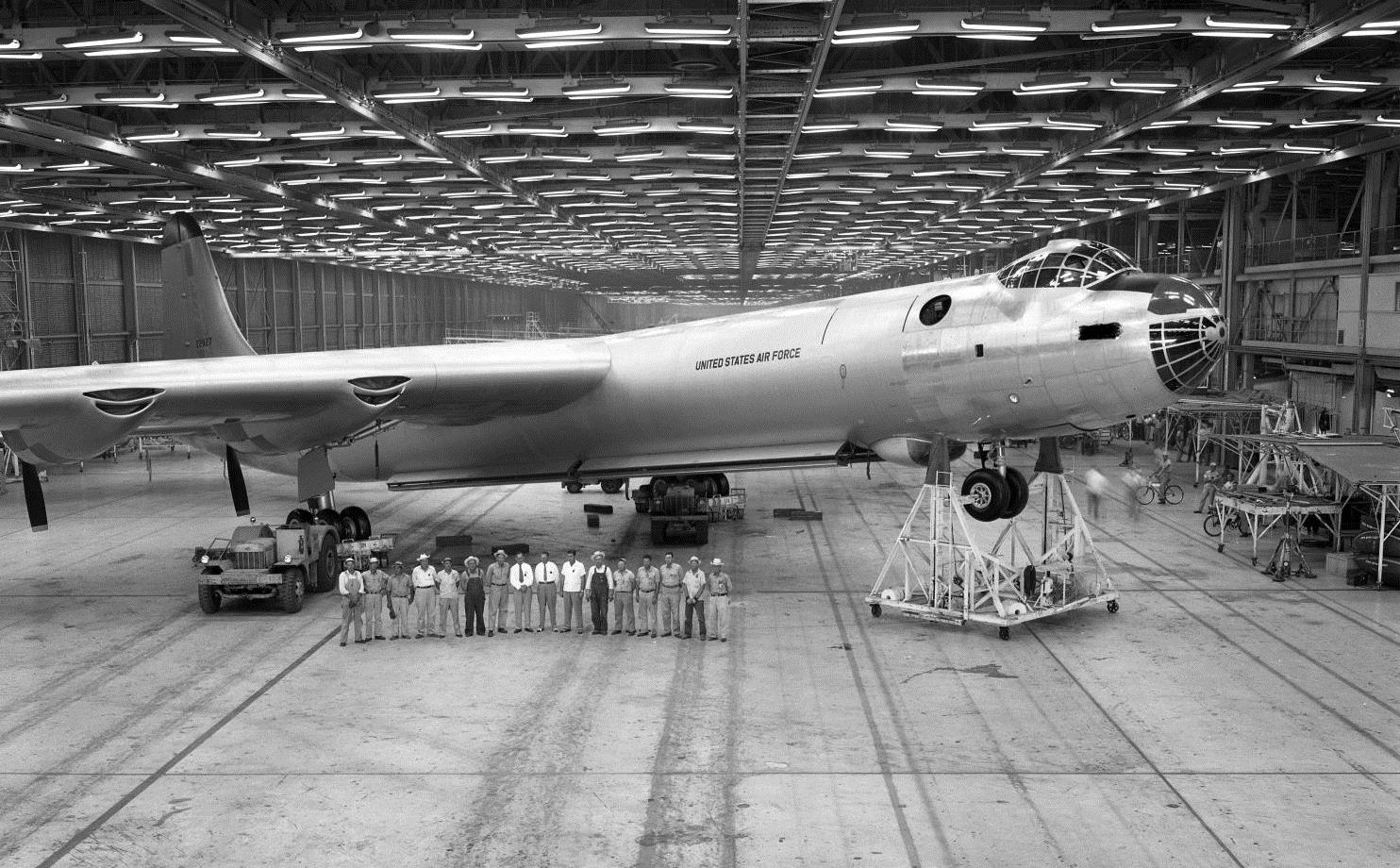
……….
Compared to the B-29, the Army had to settle for a not much higher ceiling at about the same speed. But they did get a huge bomb bay with over four times the payload and almost double the range. And, the plane could stay aloft for up to 48 hours if configured for flight duration.
……….

……….
……….

……….
Here’s the comparison breakdown. Numbers are approx, based on different configurations of the planes
Concept…..Type……….Speed...……..Combat Range/Ferry Range...Payload……..…Ceiling
1934……....B-17……….180mph……….2,000/4,000m………..….4,000lbs…….….30,000ft
1938……....B-29……….220mph……….3,000/6000m………..….20,000lbs…….…35,000ft
1941……....B-36……….230mph……….5,000/10,000m……..…..90,000lbs……….40,000ft
Note the bomb load was more than 20 times the original B-17 bomb load, developed only 7 years earlier. The payload alone of 90,000 lbs is almost what 2 fully loaded B-17s weighed in total.
……….

……….
Consolidated Aircraft in San Diego, which was producing the B-24 Liberator for the Army, got the contract. But their enormous San Diego production facility was cranking out B-24’s around the clock so they built a whole new plant in Fort Worth Texas just for the B-36.
……….

……….
……….

……….
Consolidated Aircraft, San Diego
……….
 ………. ……….
……….
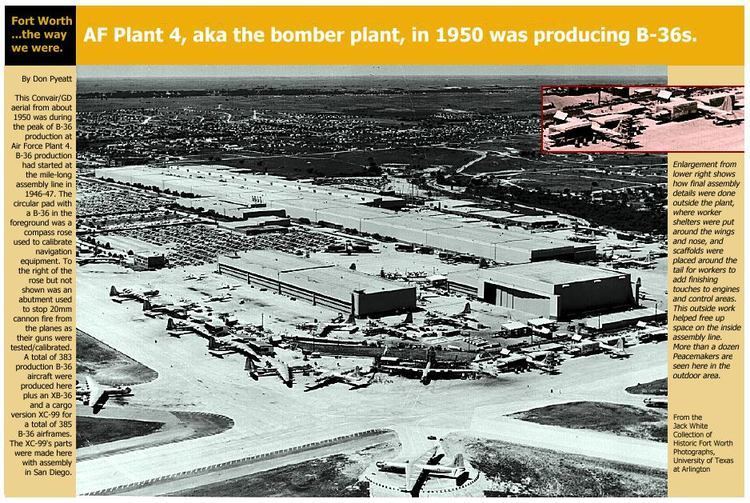
……….
Consolidated Aircraft, Fort Worth
The B-36 program was hurry up then wait, then hurry up again. In a surprise move in 1947, the Soviets unveiled their brand new long-range strategic bomber, the Tupolev Tu-4. Seems 3 B-29s crash landed in Russia after bombing runs over Japan during the war, and the Soviets found them and “borrowed” our 3 billion dollars worth of R&D for their new plane.
……….

……….
You can tell it’s a Soviet design because it has a red star on the tail. (Rolls eyes)
This is our design, not to be confused with theirs. Wanna guess where the Soviet Union pilfered the info to build their first atomic bomb in 1949?
..........
 .......... ..........
The TU-4s made quite a stir at the Moscow Air Show in 1947 when our three crashed planes, and 4th, brand new reverse-engineered one flew over the crowd. And we thought it was bad when the Taliban captured a bunch of motor-pool HUMVs in Afghanistan. Suddenly, both Chicago and LA were in range of a potential one-way suicide flight by the Soviet’s knock-off B-29. Not good.
……….

……….
You might expect the final rendition of a years long design philosophy to be the best in its class, but the B-36 was kind of misfit, and a bit of a Frankenstein at that. Everything about it was problematic it seemed. It was, at the same time, both the apex of some technologies and trailing end of others.
……….

……….
Ironically, its best feature was also its curse: its massive size. Because it was so big everything about it had to be customized. And every custom technology meant more problems and more maintenance. But at a time when we needed it the most it was the only plane capable of carrying our enormous Mark 17 H-bombs. And that was ultimately far more important as a strategic deterrent than any teething problems it had.
……….

……….
Mark 17 H Bomb. Check the guy behind it in a baseball cap for scale.
The wings were so thick where they connected to the fuselage, 7’ in fact, that a man could crawl through them to access the engines while in flight.
……….

……….
But it was also a propeller driven behemoth at the beginning of the jet age. And it was slow. Compared to jets, real slow. Even Propellers 19’ tall can only move you so fast when you weigh over a quarter million pounds. 276,000 fully loaded to be precise. 138 tons, including 20,000 gallons of fuel and up to 22 men on board.
……….

……….
……….

……….
It flew for only 10 years before being usurped by the B-52, which has now served for over 50 years. The B-36 might not have even served that long except it was all we had at the time to meet the growing Soviet threat. In fact, the military has since acknowledged that in the 50’s if the Soviets wanted to roll right into Western Europe we simply didn’t have enough to stop them. Deterrence, and the BIG BOMB, was our only card to play.
……….

……….
A good place for a Booby Break

It was a turbulent period and the B-36 was right in the middle of the turbulence. The atomic bomb was new, the Cold war was new, the Air Force was new, the Strategic Air Command (SAC) was new, the jet engine was new, and advanced avionics were new. And for its entire life the B-36 was basically under development to accommodate all these changes. It was the plane of eternal software patches before software existed. You might call it a “transitional period” in aviation history.
The B-36 was not a bum. It was just in a transitional period. No more, no less.
……….

………..
……….

……….
Caught up in rapid and never ending period of change, the B-36 was perpetually modified, revised, and upgraded, and served as a guinea pig for all sorts of crazy programs. Frankenstein indeed.
……….

……….
But let’s start at the beginning. This is the first flying prototype from 1941. Look at those wheels. Enormous. Custom made, naturally. Enough rubber for 120 normal car tires each. And they didn’t work. Oh, they didn’t explode or anything like that. They just didn’t distribute that massive load of 138 tons quite well enough.
……….
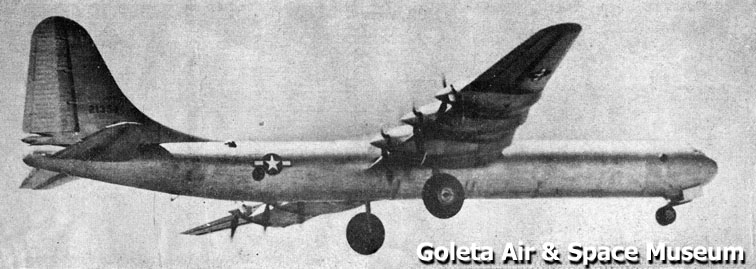
……….

……….
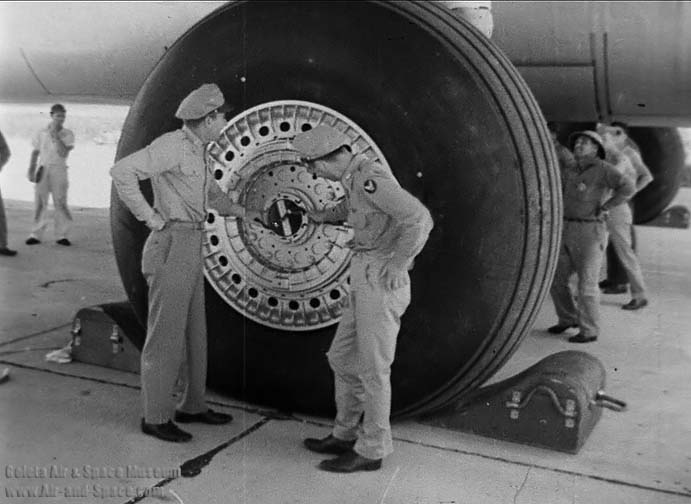
……….
So the ONLY runway they could be used on, without destroying the tarmac itself, was the custom made runway where it was built in Fort Worth. It took a while to rework runways in Maine, the Dakotas, Alaska, and eventually others for potential “over the pole” flights to Russia. It didn’t help matters that the planes were often too big for their own hangers. Custom fixes needed. Again.
..........
So to solve the wheel weight distribution problem they tried tank tracks. Nope.
……….

……….
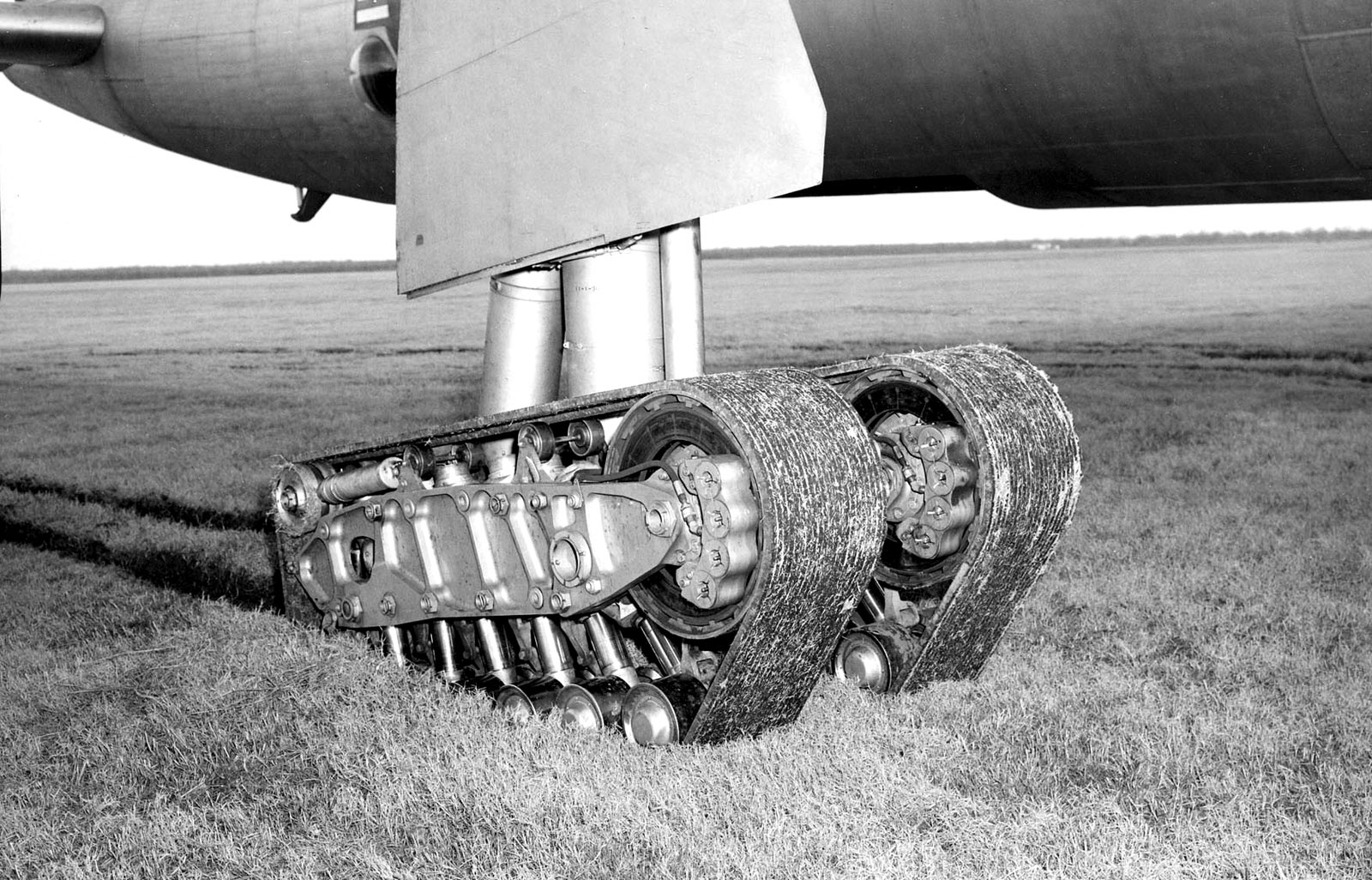
……….
Finally they settled on a quad wheel arrangement, which worked just fine. The B-52 uses a similar solution today, as do commercial airliners.
……….

……….
Then there are the engines, which were designed generically to be used in a front facing configuration. So what’s up with their axx-backwards arrangement? Well, I don’t know. But those who do say because of its size and enormous lift capacity, the B-36 needed a smoother laminar flow of air to the propellers, which a push system gives you. So the engines went to the back of the wing. This also allows cleaner air intakes on the leading edge of the wing, and some other nice design results, but it also creates other problems.
……….
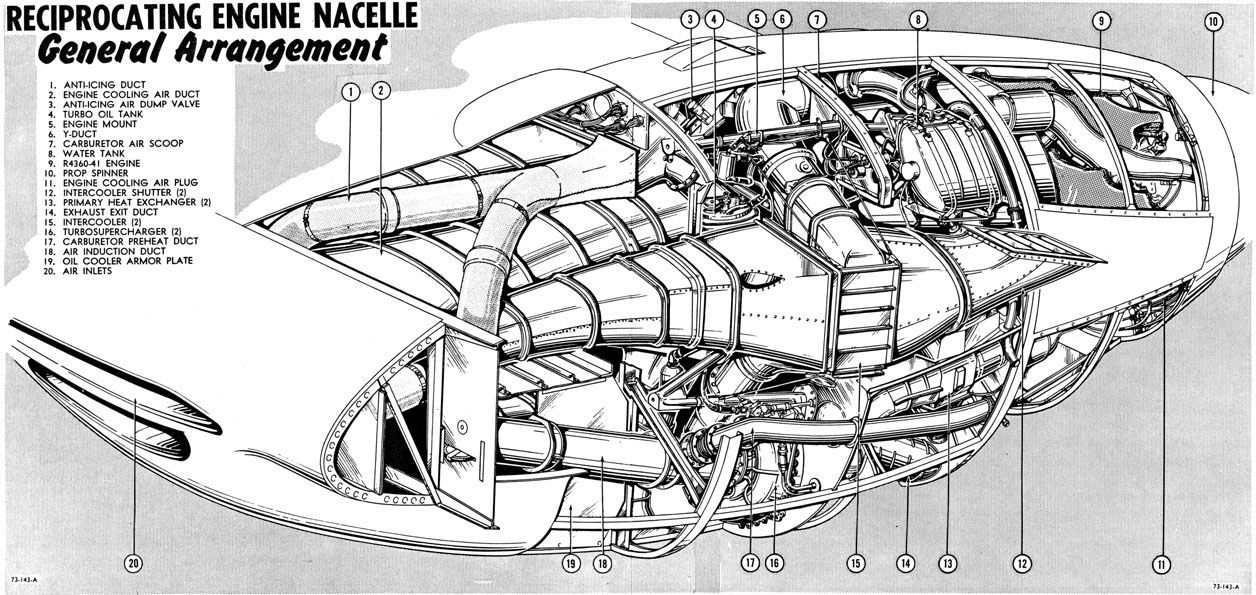
……….
The carburetors were usually in the back of the engine assembly, where hot air from the engines washed over and thawed them. But because the engines were installed as pushers, the carburetors were in the front of the assembly, not the rear. So they tended to ice up at high altitudes because they were out of the wash of hot air from the engines. Bad.
……….

……….
Ice can restrict air flow and cause a fuel-rich mixture, which can build up in the exhaust and catch fire eventually. Oh the headaches designers face.
……….

……….
She also went through oil like a mother, needing a dedicated 100 gallon tank just for the lubricant.

Each of the 6 engines used 56 spark plugs...that’s 366 in total. A big change job for anyone on a Saturday afternoon. And those big R-4360 engines ran on leaded, 145 octane fuel that fouled everything it touched. Nasty.
……….
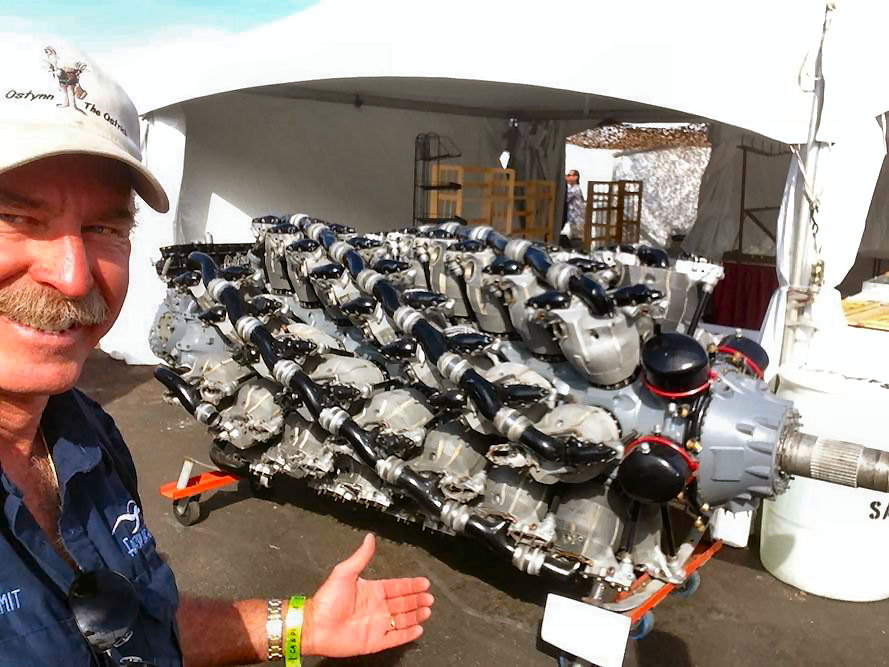
……….
Behold, The Pratt and Whitney R-4360 engine. The “Corncob”
……….
……….

……….
But while those whopper engines could carry the load, but they never even got close to the cruising speed the Army, and later Air Force, wanted. So one of the Frankenstein experiments was to add 4 more jet engines on her wings to compliment the piston engines. It might be the only plane in history to have both types of engines at the same time.
……….

……….

……….
This did give her about another 100 mph in speed which helped, and extra lift capacity, but it was a clunky patchwork solution at best. And now you are maintaining piston AND jets engines. Ugh.
This led to the aircraft’s slogan of “6 turning, and 4 burning.” That’s 10 engines on every plane to tend to. The massive amount of maintenance required caused crews to revise the slogan to "two turning, two burning, two smoking, two choking and two more unaccounted for."
……….

……….
She was even considered as a candidate for nuclear engines. As if nuclear bombs aren’t dangerous enough, maybe nuclear engines in the sky are a good idea? The USAF actually flew about 50 test flights from 1955 to 1957, but after a billion dollars and 15 years of minimal gain, the project was scrapped due to the predictable “safety” concerns that come with airborne nuclear reactors.
……….
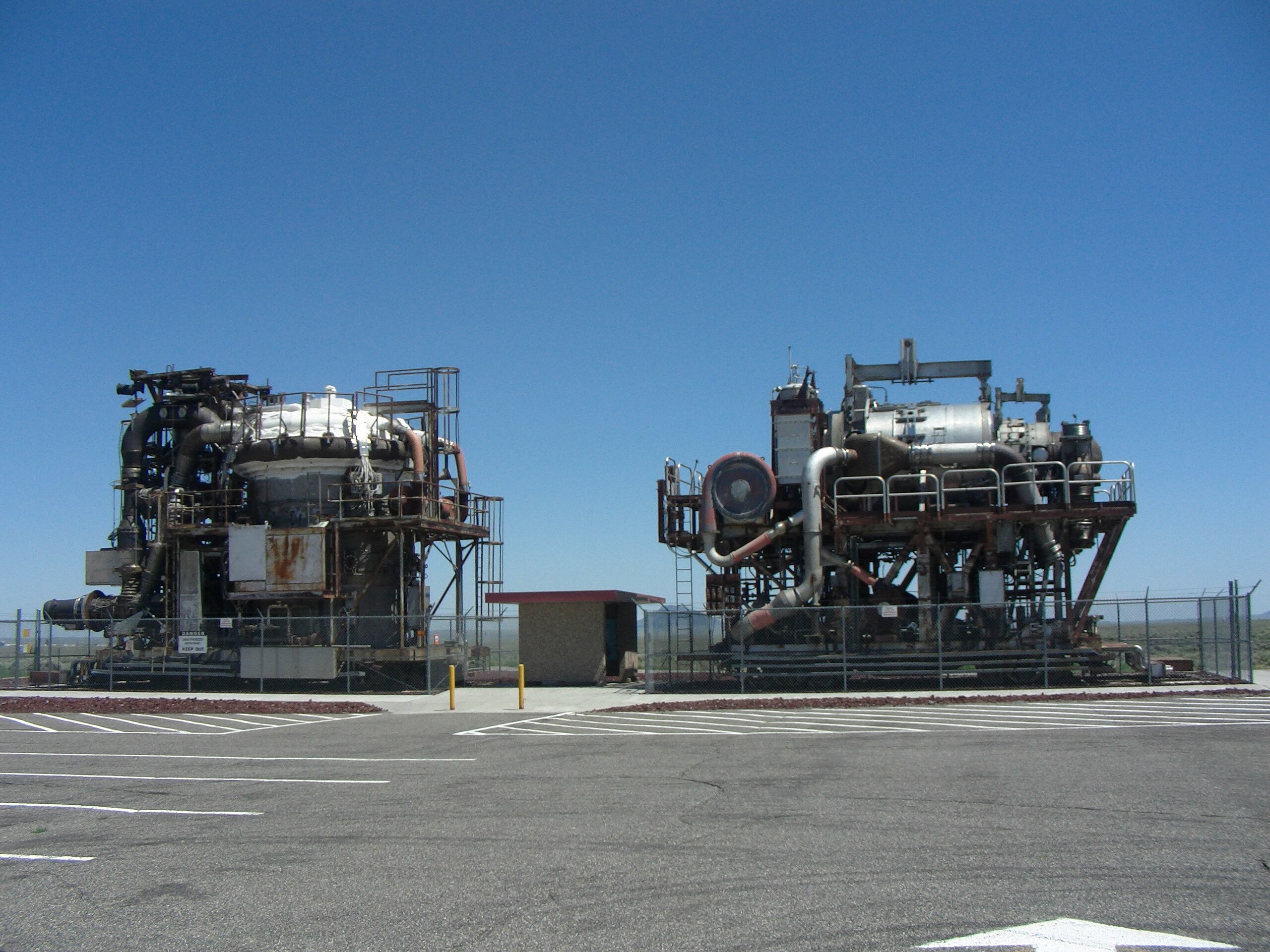
……….
Prototype Nuclear Engines for Bombers with Atomic Symbols on them – Don’t do it!
……….

……….
Having survived a near-nuclear makeover, then the Navy tried to kill the B-36. In an event known as the “Revolt of the Admirals,” inter-service rivalries reached a howling peak during appropriation time. The Navy said carrier-based aircraft could everything America needed and should get all the monies available.
………..

………..
In their mind there wasn’t even a need for a dedicated Air Force. Naval and Army aviation was sufficient. Because of her incredible range and huge bomb capacity the B-36 and SAC (Strategic Air Command) survived the crisis. The primary argument being that long range bombers could go places even ships can’t reach. Including landships.
……….

……….

……….
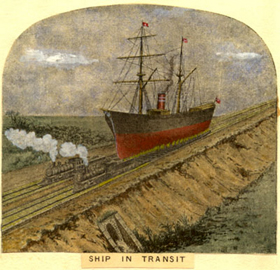
……….

……….
Which was true, but the Achilles Heel of the B-36 was always her speed. Her range was fabulous, her playload was fabulous, but she just couldn’t haul axx. At all. And, there was no fighter with the range to stay with her and protect her.
……….
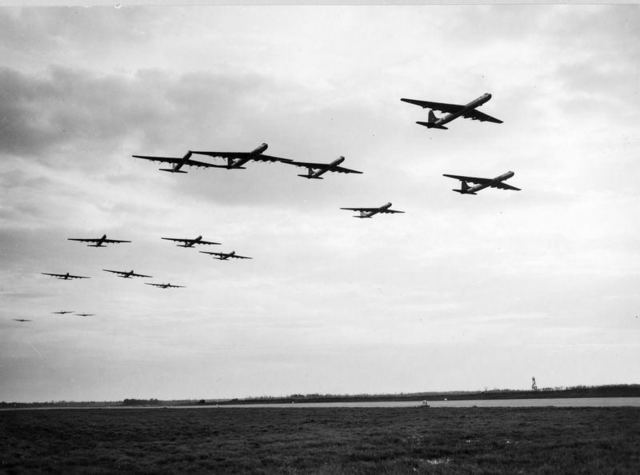
……….
So in one of the most bizarre programs ever, the Air Force came up with a plan. If an escort can’t hang with you, you just let it hang FROM you. You carry it along. Aircraft manufacturer McDonell-Douglas loved to name their planes after spirits and spookies.
Like the Banshee, The Phantom II, and this case, the Goblin.

Oops.
Here we go.
……….

……….
The X-85 Goblin was the smallest fighter ever made. At only 15’ long it was not a bad little plane. It was fast, agile, and while not having a killer punch it could still do some damage. You simply folded up the wings, tucked it in the bomb bay, and when the bad guys got near you dropped it out to protect you. It could fly for about an hour, then you hooked it back in. Great idea. It just didn’t work.
……….

……….
It always amazes me how far down the line some of these concepts get. Once again you are faced with the primary issue of, if your bomb bay is full of fighter planes, where do the bombs go? Now in this case the argument could be made that you only need one nuke, and the fighter/s could be in accompanying planes.
……….
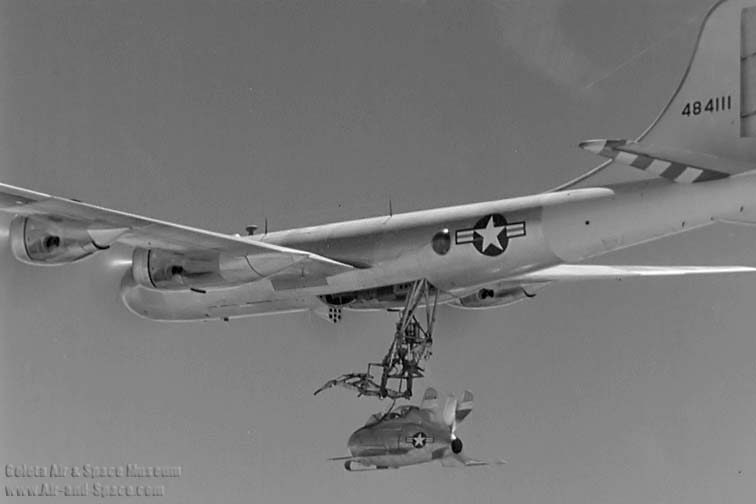
……….
Fair enough, but it turns out that as good as the Goblin was you simply couldn’t retrieve it. Even an incredibly experienced test pilot could only snag the recovery hook less than 50% of the time, and had 3 crash landings out of 6 test flights. Just too much turbulence beneath the plane to make it functional. (Here tested on a B-29)
……….

……….
The Air Force tried again with Project Tom-Tom.
……….

……….
No. Just no.
So that plan went into the trash can too. But the Air Force had an answer for smart-alecs like me. Criticize our bomb bay full of fighters? Oh, we’ve only just started down the rabbit hole. Hold our beer.
Operation Tip-Tow. We’ll just stick our escort fighters on our wing tips. All we need is a specialized clip of the end of each wing, and….Oh boy. We’ll just save some text and cut to the chase here. That didn’t work either.
……….
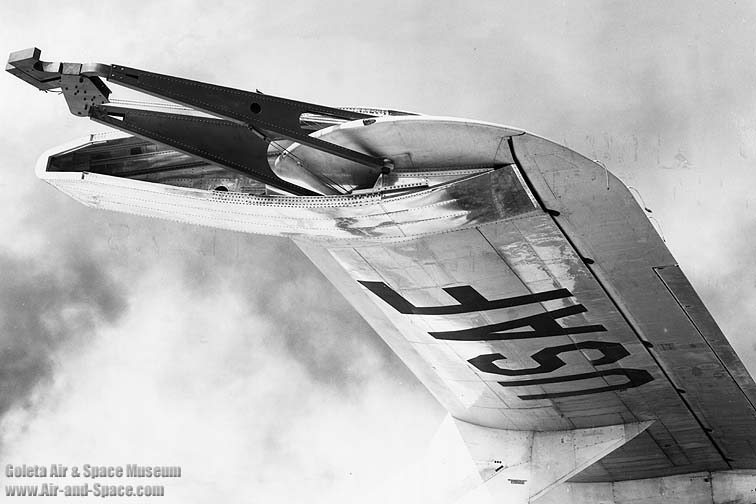
……….
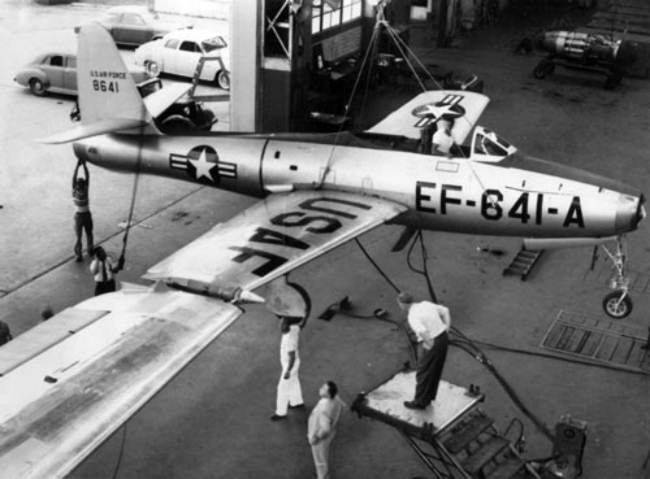
……….

……….
But hey, it wasn’t as crazy as what the Russians were up to.
……….


……….
Last Tiday Break before end of poast!

It seemed even Mother Nature had it in for the beleaguered B-36. A Texas Tornado almost wiped out our entire fleet of over 80 planes based at Forth Worth in 1952. Planes parked leisurely on the tarmac got chewed up and tossed around like toys. Naturally, this was kept hush-hush by the military. We didn’t want to be the butt of any Soviet jokes...or nuke strikes for that matter.
……….

……….
Generic tornado image added for dramatic effect.

……….
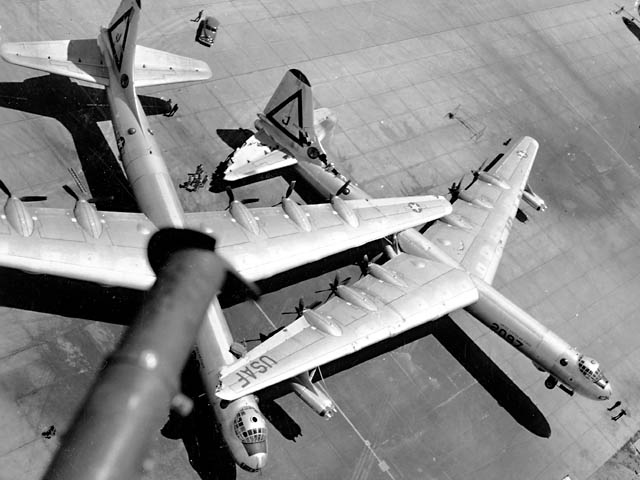
……….

……….

……….
And there were some accidents. Boo-boos, really. It’s just a simple truth that if you are flying nuclear bombs around, bad things are bound to happen. In 1950 there was a crash in coastal British Columbia. Seven hours into the flight three engines caught on fire. The crew ejected the bomb and bailed out over the Pacific, most surviving.
……….

……….
But the plane went down in very rough terrain and was lost. Planes flying over snow areas had huge red tips painted on them to help searchers find crash wreckage, but even so it took three years before the wreckage was found and recovered.
……….

……….
Another accident took place in 1957 at Kirtland AFB near Albuquerque, New Mexico. Here’s a dramatic recap by a B-36 historian:
“In the back of the B-36, two men attend to the security of a giant Mk 17 hydrogen bomb. One, an observer, and another, a co-observer. As with most protocols associated with handling nuclear weapons, two persons must be present at all times. One of the two men has unzipped his flight jacket. It is a seemingly small event that may be the metaphorical “flap of the butterfly’s wing” building rapidly toward Armageddon.
An accidentally exposed control cable attached to the release lever of the Mk 17’s carrying cradle becomes snagged on the zipper pull of the crew member’s flight jacket as he confirms removal of a manual safety locking pin in preparation for landing. It is a routine procedure about to go wildly out of control.
……….

……….
A cool Black Sabbath album cover. Not really related to anything but they are airmen, with zippers, like in the story you are reading.
There is a loud “bang”. The sound of aluminum and magnesium panels being battered by some enormous force. A sudden rush of wind blast fills the bomb bay of the B-36 as the aircraft suddenly lurches upward, unburdened by its massive load. Daylight blasts into the previously dark fuselage.
The giant bomb bay is suddenly empty, the bomb bay doors cracked apart and flapping in the wind blast outside the aircraft. The weapon suspension chains swing back and forth, now released of their 20-ton burden. The Mk 17 hydrogen bomb, the largest in the U.S. arsenal, is gone. It has accidentally fallen out of the aircraft, tearing the bomb bay doors open, and disappearing into space.
……….
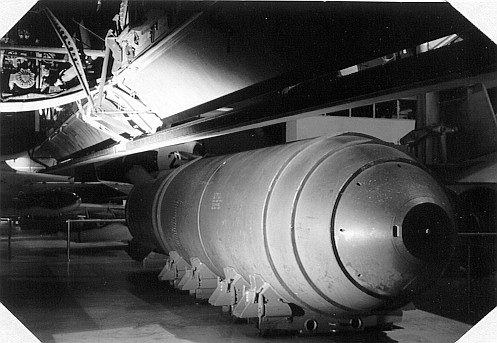
……….
In the way that seemingly insignificant actions can spiral into unimaginable calamity, either the bomb co-observer’s zipper pull accidentally became lodged on an 8-inch long section of exposed manual release cable, or one of the two observers accidentally put their body weight on the control cable. The cable let go. The gigantic 20-ton hydrogen bomb fell out of the airplane.”
Oops. Fortunately there was no nuclear core in the bomb, but the conventional explosion blew a he77 of a crater in the ground. The Air Force, concerned about upsetting people, kept the incident classified.
……….

……….
Albequerque Ballon Festival. Look at the cool Vase Balloon in the lower right.
But what ultimately doomed the B-36 was her old nemesis, the slows. The MiG-15 was already a deadly threat, not to mention the improved MiG-17, MiG-21, and subsequent generations of even faster jet fighters. The B-36 was, and always had been from day one, just too damm slow. Even with 4 extra jet engines slapped on the wings.
……….
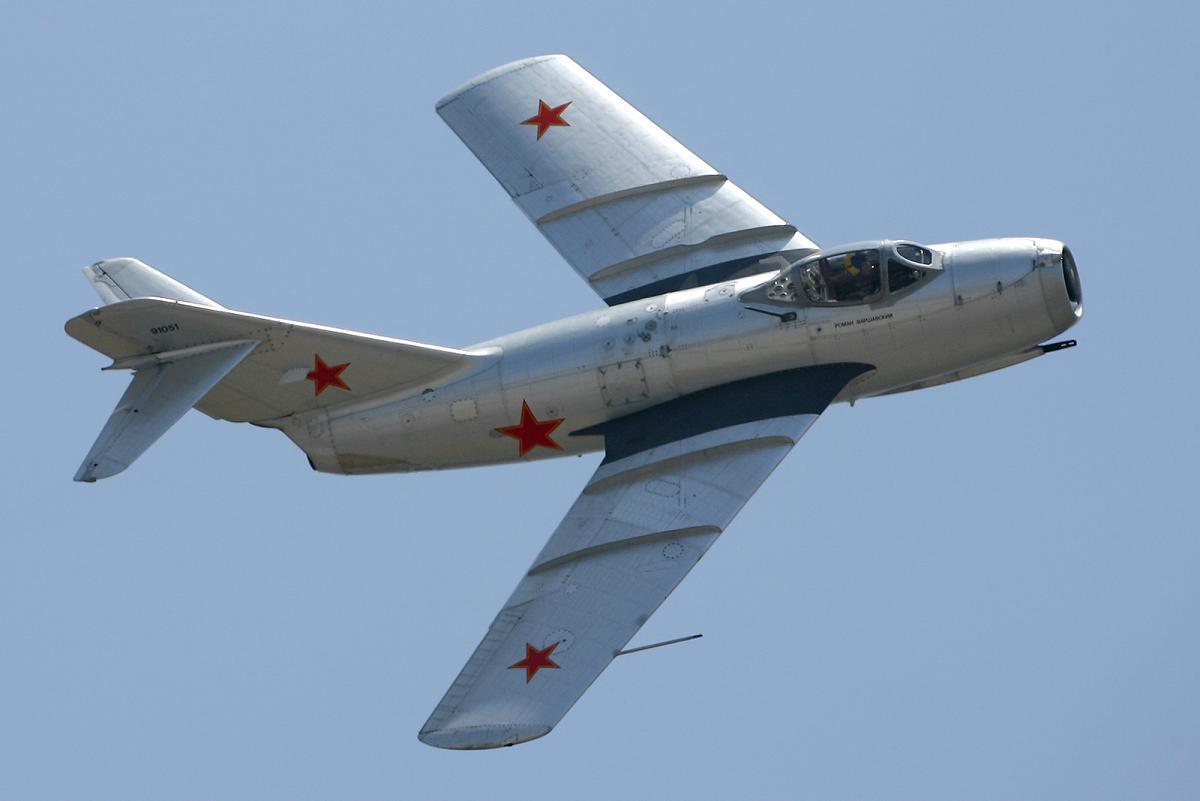
……….
So, out went the Peacemaker and in came our new generations of faster, fully jet powered bombers, the B-47 Stratojet, the B-58 Hustler, and the B-52 Stratofortress.
……….
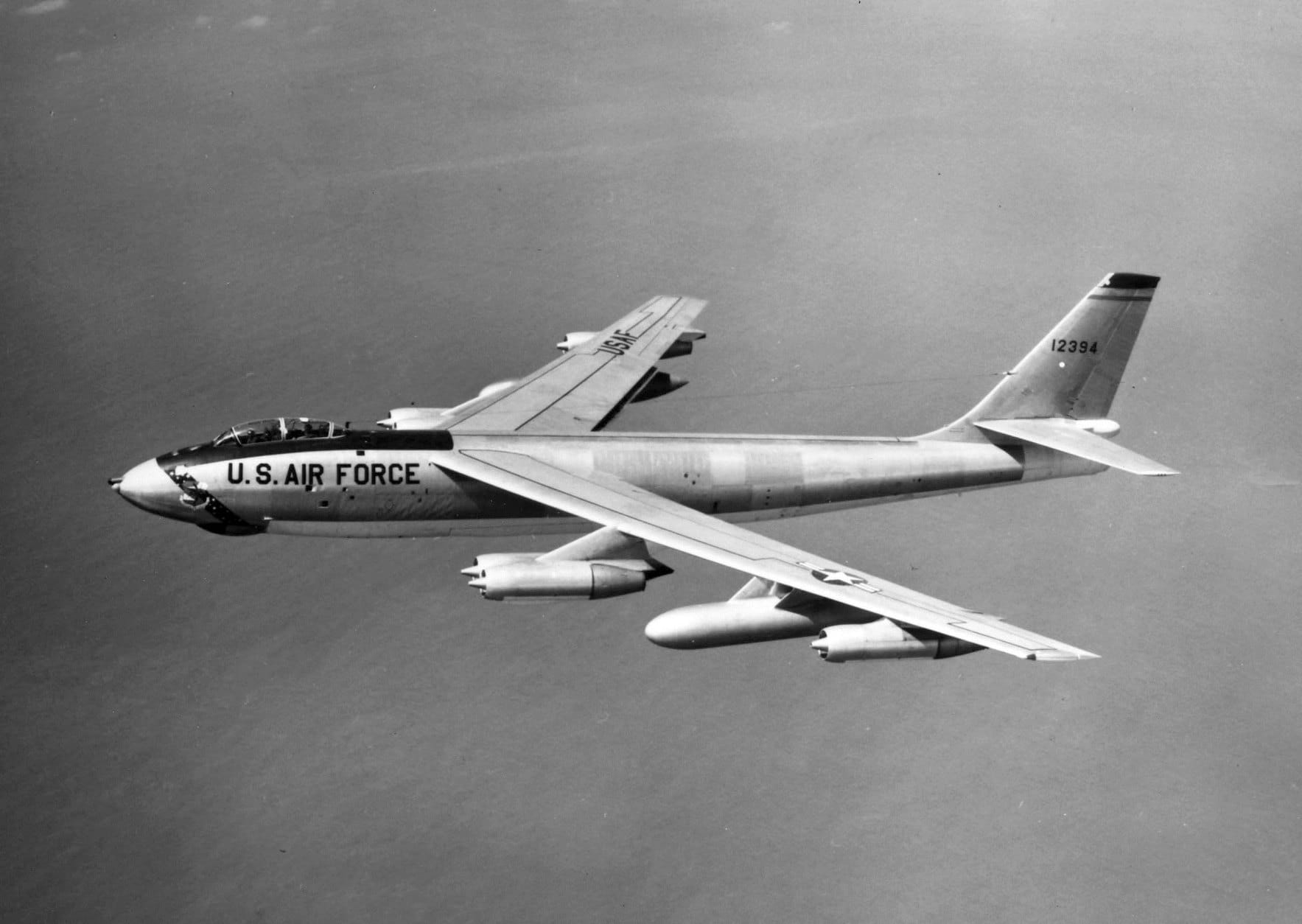
……….
B-47 Stratojet
……….
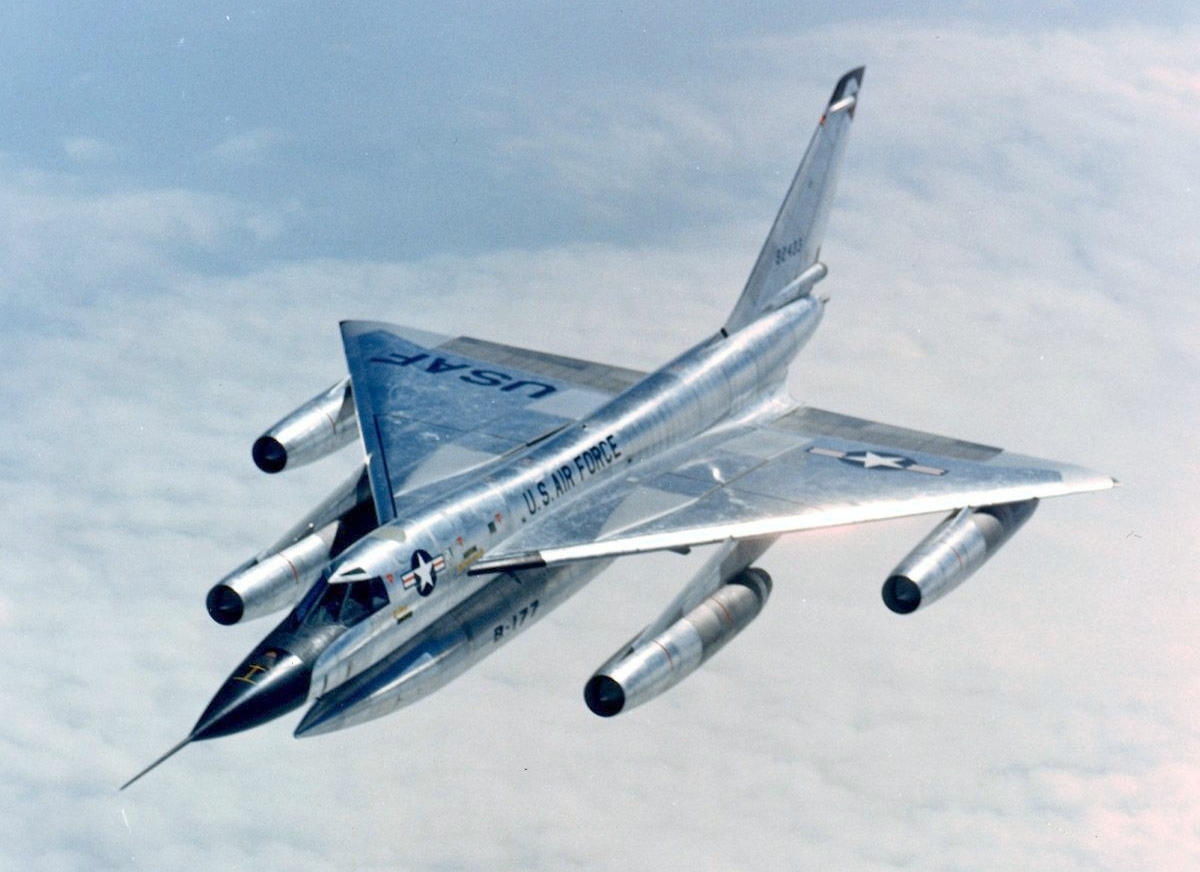
……….
B-58 Hustler
……….

……….
B-52s
The last of the B-36s were lined up at Davis-Monthan Airplane graveyard near Tucson. Like all our other disarmament treaty sacrifices and surpassed technology, they spent their last days baking in the Arizona sun waiting for the Soviets to count them with their satellites. Trust, but verify.
……….

……….
 ………. ……….

……….
But we’ll always have our memory of her in her glory days as the star of the show. Hollywood’s own 1955 classic, “Strategic Air Command”, starring Jimmy Stewart, in a supporting role, to the B-36 Peacemaker.
……….
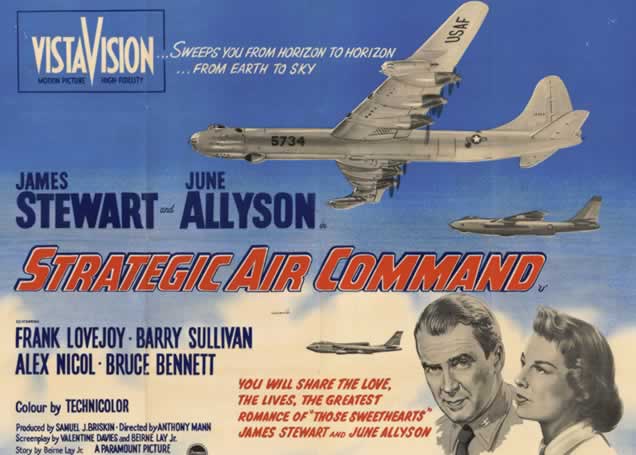
……….

|
|



 to award
the award.
to award
the award.






/b-36-peacemaker-large-57c4bbe83df78cc16edb7001.jpg)










 ..........
..........

























































